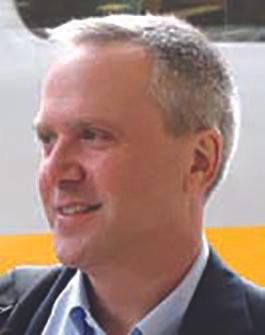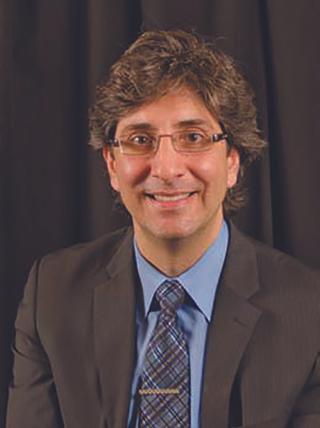IBC Reflections

TOM BUTTS
EDITOR-IN-CHIEF
tbutts@nbmedia.com
The pace of industry consolidation as well as our industry’s move towards IP were never more evident than at last month’s IBC Show in Amsterdam. I had a chance to sit down with several industry leaders to discuss the ways that these changes are affecting how their companies respond to their customers. The three companies represent a good cross section of our industry, from creative to production to distribution. Another distinguishing characteristic is that the leaders have been at the helm for less than two years.
Louis Hernandez, Jr., president of Avid, came from outside television and has had about 18 months to assess where it’s going. As leader of what is arguably the largest provider of content creation technology in our industry, Hernandez knows the challenges that go with creating the kind of content consumers expect these days but he also thinks we could be working much more efficiently.
“This industry is so fragmented,” he said. Drawing a comparison to an industry in which he was involved in before coming to Avid, he said that banking is three times larger than media but has a third fewer vendors. “But the main thing,” he adds, “is that out of the 10 segments that consume technology, only media has it where the top 10 vendors take up less than half of the market.” His conclusion? “We’re a lot less concentrated in our vendor community so we spend a lot more time just putting all the pieces together.”
Hernandez adds that while consumption of rich media assets is “going through the roof,” there’s also more pressure on Avid’s business model, because “it’s easier for anybody to create.”

Louis Hernandez, Jr. As a response to this evolution, Avid has, over several years, moved to a more cloud-based environment in the form of its “Avid Everywhere” initiative and has also instituted a highly developed customer feedback program with its Avid Customer Association.
For Grass Valley, the IBC Show represented the debut of a merger that is not yet fully whole, but well on its way. Announced just days before the NAB Show, the deal combining Grass Valley with Miranda under the ownership of Belden is one of the largest mergers this industry has seen in years. Marco Lopez, the man charged with bringing the two companies together, is optimistic.
Get the TV Tech Newsletter
The professional video industry's #1 source for news, trends and product and tech information. Sign up below.
“The reaction has been great,” he said, referring to customer response to the merger. He emphasized how quickly the company has moved towards integrating the two entities. “Speed of execution is the number one thing,” he said, “You’ve got to get it right.”

Marco Lopez Lopez announced several initiatives in the consolidation, including the funding of a new $15 million manufacturing and R&D facility at the company’s home base in Montreal as well as the launch of a new channel partner program.
Echoing Hernandez’s thoughts on the increasing value of content, Lopez notes the new Grass Valley’s two-pronged approach to media production: content creation and delivery.
On the creative side, Lopez is bullish about 4K. “Our customers are excited about 4K; it is the next way that content creators will engage with the customer base,” he said. On the distribution side, the continuing move towards an all-IP environment will help make 4K inevitable and in his words, “a virtual alignment of the stars.”

Charlie Vogt “4K is coming, but at the same time, coaxial, point-to-point connections are not really adapted for 4K,” he said. “IP today is already at 10 GigE, but within three years, you will have 40- or 100 GigE type bandwidth on a single cable. That starts to become really interesting for our customers.”
As the leader of Imagine Communications, Charlie Vogt has been tasked with moving the former Harris company away from a focus on propriety hardware and standards and more emphasis on software-defined architectures. Vogt wants to move broadcasters out of the traditional baseband world into the world of IP and virtualized cloud environments. And he’s not shy in expressing his confidence about where they’re going.
“We are certainly mapping out the right vision and strategy to where this industry needs to go,” he said. “People are finally latching onto the fact that baseband is going to go IP.”
An all-IP environment is necessary for broadcasters to adapt to today’s consumer desires, Vogt noted. “Today’s consumer has been created by two things: “access, specifically by broadband, the Internet and mobility; and this new expectation around the experience. If you’re going to participate in the spending of this new consumer, you’re going to have to think differently and create a network that’s much more agile, much more flexible, one that can move and change much more rapidly than today.”
As someone who came from outside broadcast and has had time to evaluate our industry’s direction, Vogt was in general agreement with his colleagues, and in particular noted that as the move to IP accelerates, the vendor community will consolidate, in line with the continuing consolidation in media ownership.
And that will impact trade shows, according to Vogt. “This show is going to be much smaller in five years, there’s absolutely no doubt about it.”
Tom has covered the broadcast technology market for the past 25 years, including three years handling member communications for the National Association of Broadcasters followed by a year as editor of Video Technology News and DTV Business executive newsletters for Phillips Publishing. In 1999 he launched digitalbroadcasting.com for internet B2B portal Verticalnet. He is also a charter member of the CTA's Academy of Digital TV Pioneers. Since 2001, he has been editor-in-chief of TV Tech (www.tvtech.com), the leading source of news and information on broadcast and related media technology and is a frequent contributor and moderator to the brand’s Tech Leadership events.

